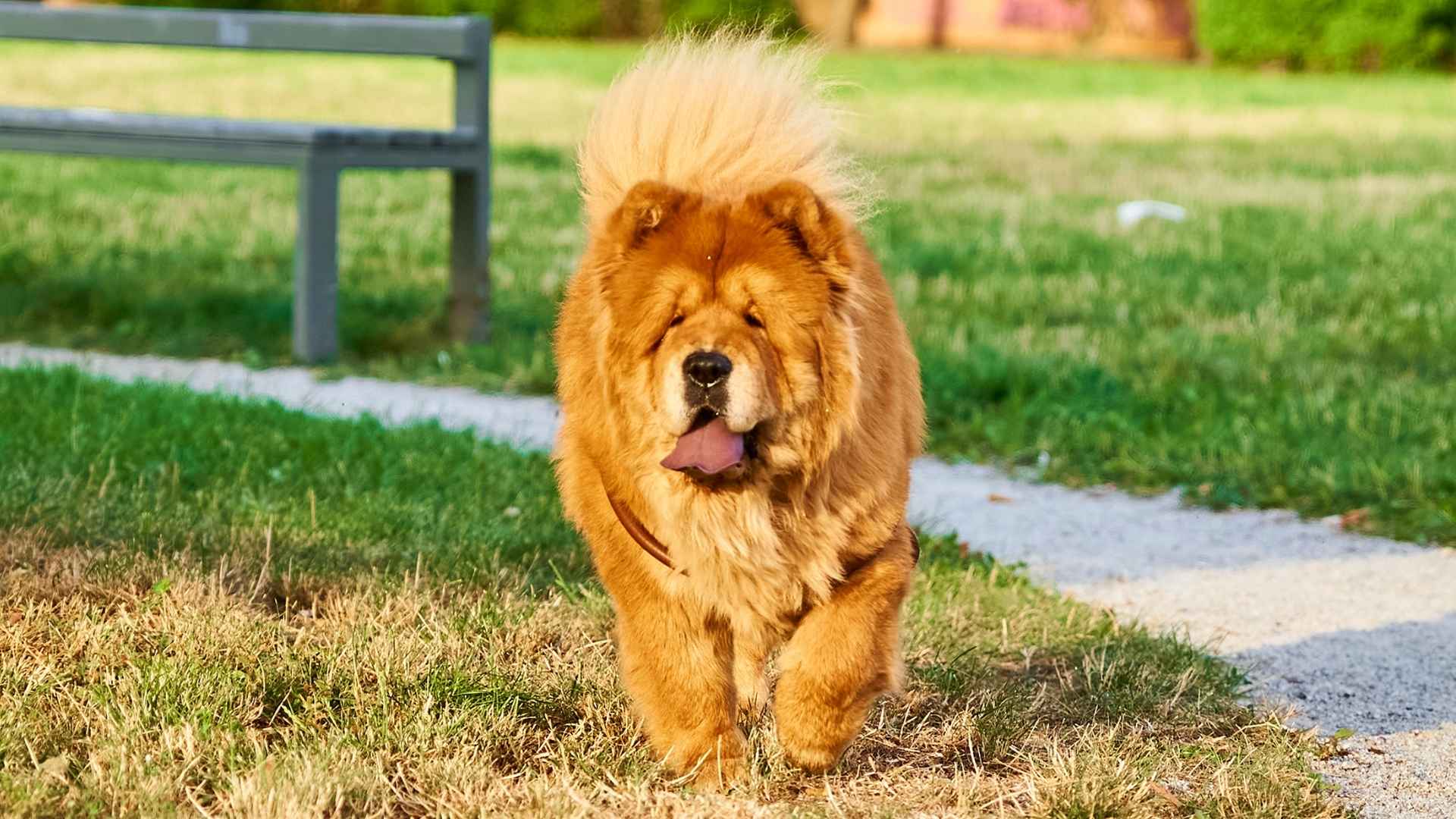You won’t find these dogs at your friend’s house. You won’t see them at the dog park or in a pet food ad. And if you do happen to spot one, you’ll probably stare for a bit before you even realize it’s a dog. That’s the kind of effect they have.
They look like they came from the jungle, not a breeder. They’re not dangerous, but they don’t look like they care what you think, either. And no, this isn’t some cute “they kind of look like lions” comparison. They actually do. I’ve seen people back up, whisper, take videos, and just stand frozen.
If you’ve never seen one in person, this might be your first real introduction. And I promise, it won’t be the last time they cross your mind. Let’s take a closer look at these dogs.
Dog Breeds That Resemble Lions
1. Chow Chow
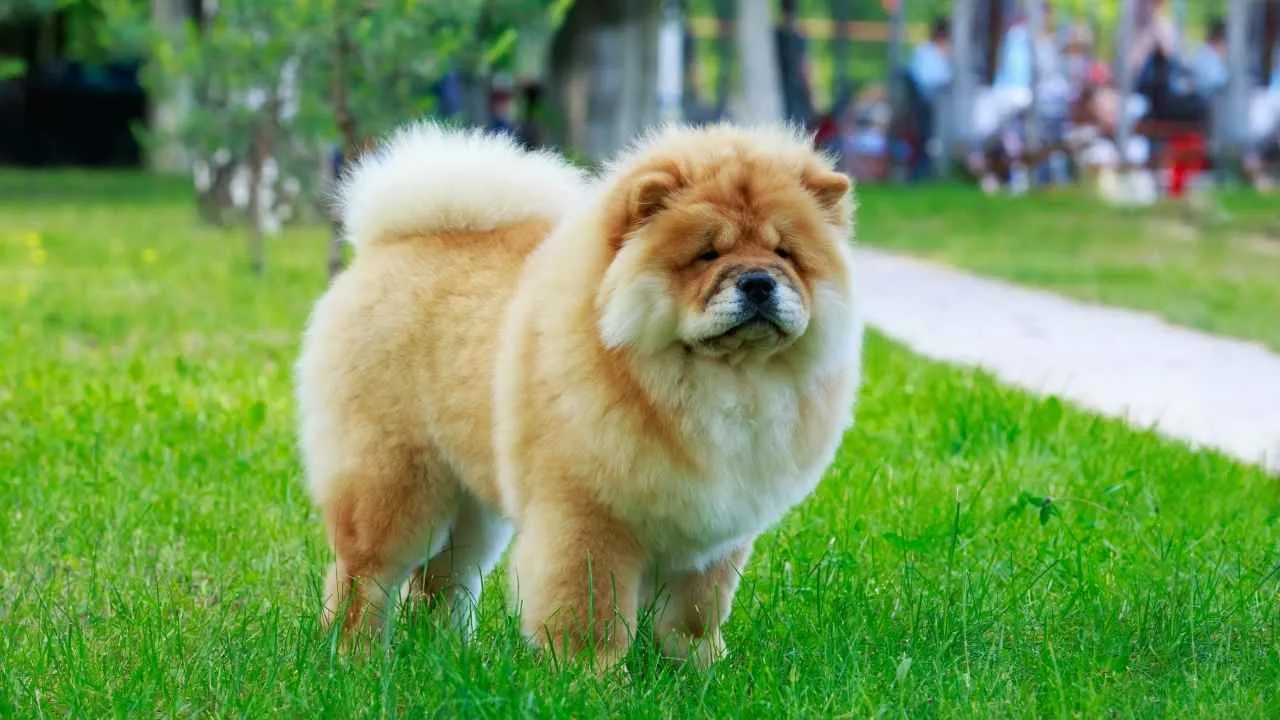
The Chow Chow’s dense mane frames its face in a way that closely mirrors a lion’s silhouette. Its broad skull and almond-shaped eyes add to the wild expression, especially when the coat is in full bloom. The thick ruff insulates and protects in cold, harsh climates.
Reserved Demeanor with a Watchful Eye
They carry a certain dignity in how they move and observe, rarely acting without purpose. Their reactions are slow but deliberate, preferring to assess rather than bark impulsively. This measured behavior often gives the impression of a creature always in control.
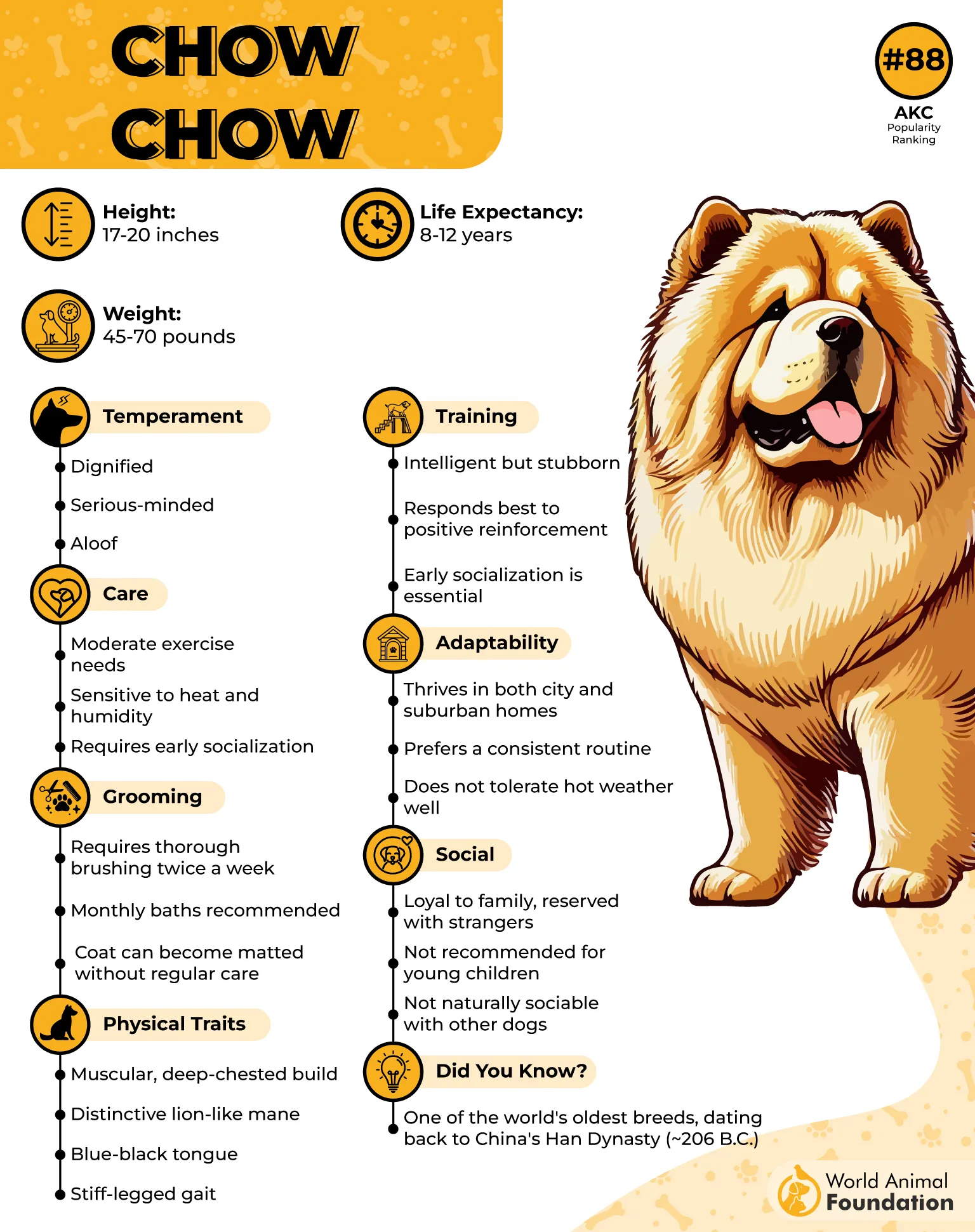
Deep Roots in Purpose
Chows were originally bred for roles that required independence—hunting, pulling, and guarding, as stated in Britannica. These ancient tasks shaped their cautious, calculated decision-making style. Their lion-like posture reflects a long history of functional strength, not just ornamental fluff.
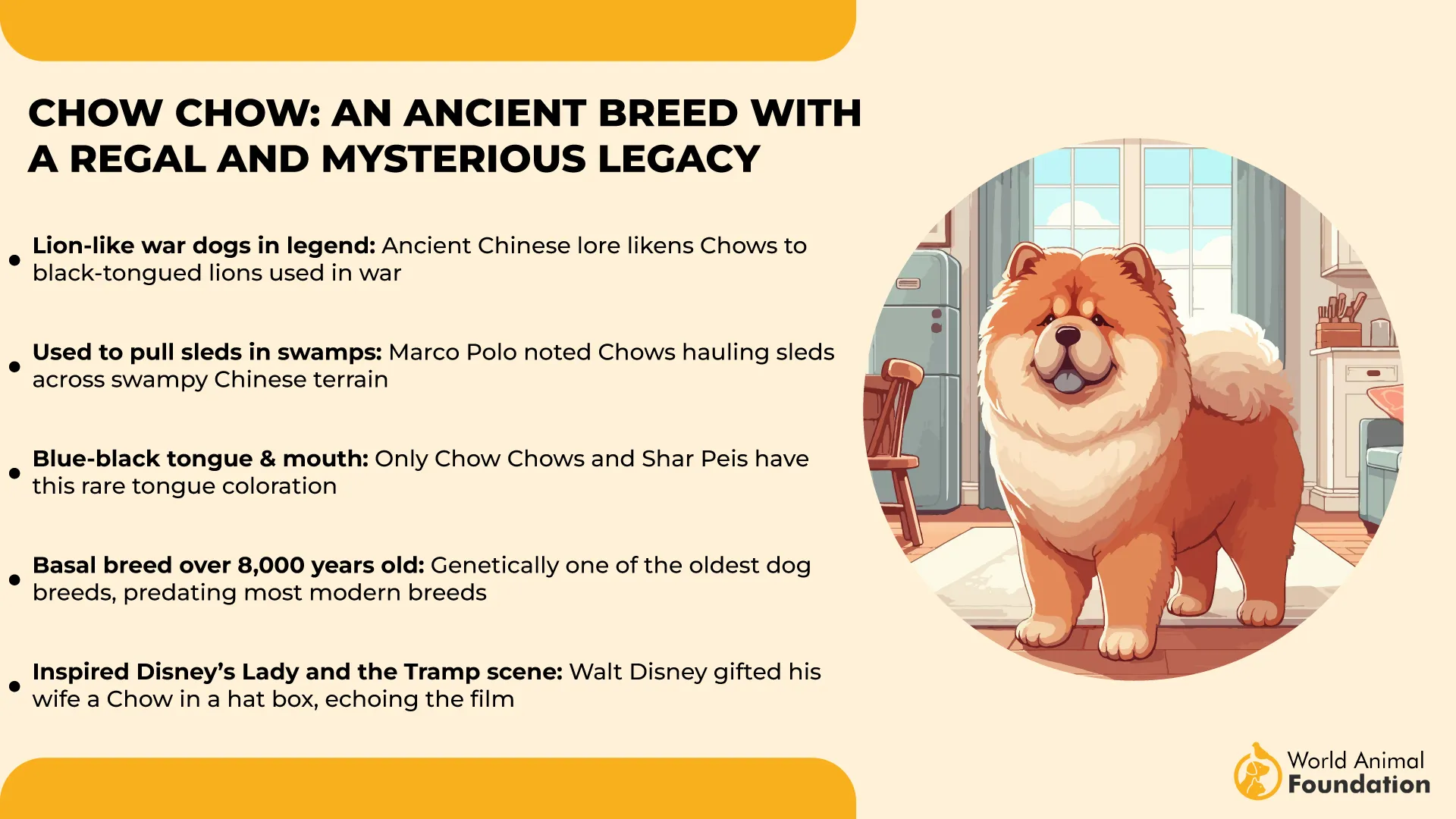
Naturally Protective Yet Selective
Their protective nature isn’t noisy or frantic; it’s selective and sharp. They bond tightly with their inner circle, quietly positioning themselves between their person and unfamiliar energy. That kind of instinctual shield is something that doesn’t need to be trained into them.
2. Bankhar Dog
The Bankhar Dog traces its lineage back thousands of years in the Mongolian steppes, bred not for appearance but for survival.
Its thick coat forms a rugged mane that flares around the neck, especially prominent in mature males. That distinct shape draws immediate comparison to a lion resting in the grasslands.
Silent Strength in Harsh Climates
These dogs were raised in unforgiving terrains where temperatures dropped well below freezing. Their heavy double coat insulates them through brutal winters, while their endurance allows them to patrol vast stretches without fatigue. It’s a functional design shaped entirely by the demands of nomadic life.
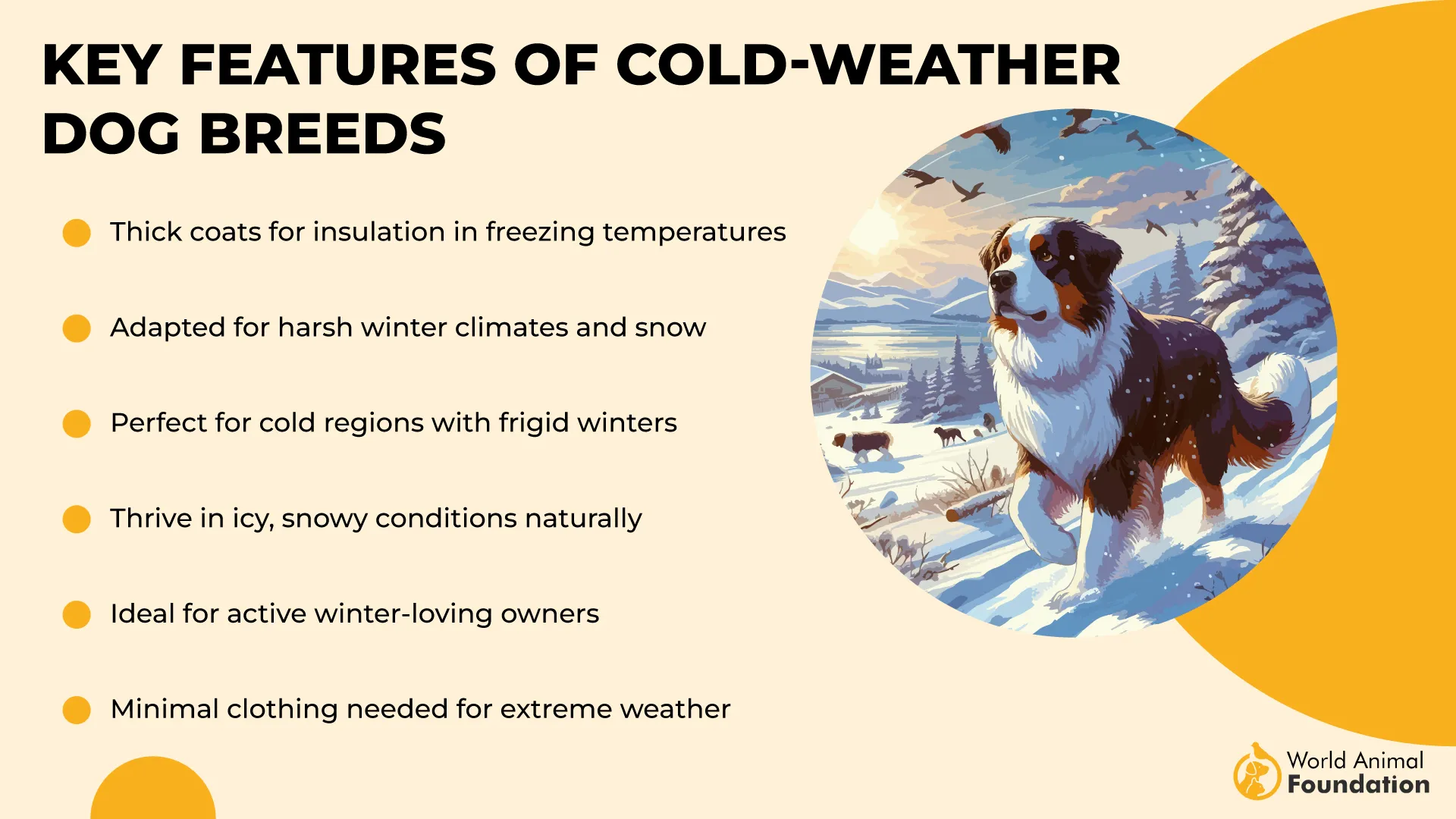
Protective Yet Measured Around Livestock
Used to guarding herds of yaks, sheep, and goats, the Bankhar isn’t reactive around animals—it’s strategic. It scans the landscape, assessing threats before taking calculated steps. This ability to manage protection calmly is what made it invaluable to Mongolian herders.
Massive Frame with Regal Presence
As large dogs, males often stand over 28 inches tall, with a powerful chest and a mane-like coat that gives them a striking silhouette. The way they carry themselves—broad-headed, deliberate, unshaken—evokes the presence of a king, quietly surveying his territory.
3. Chinese Crested
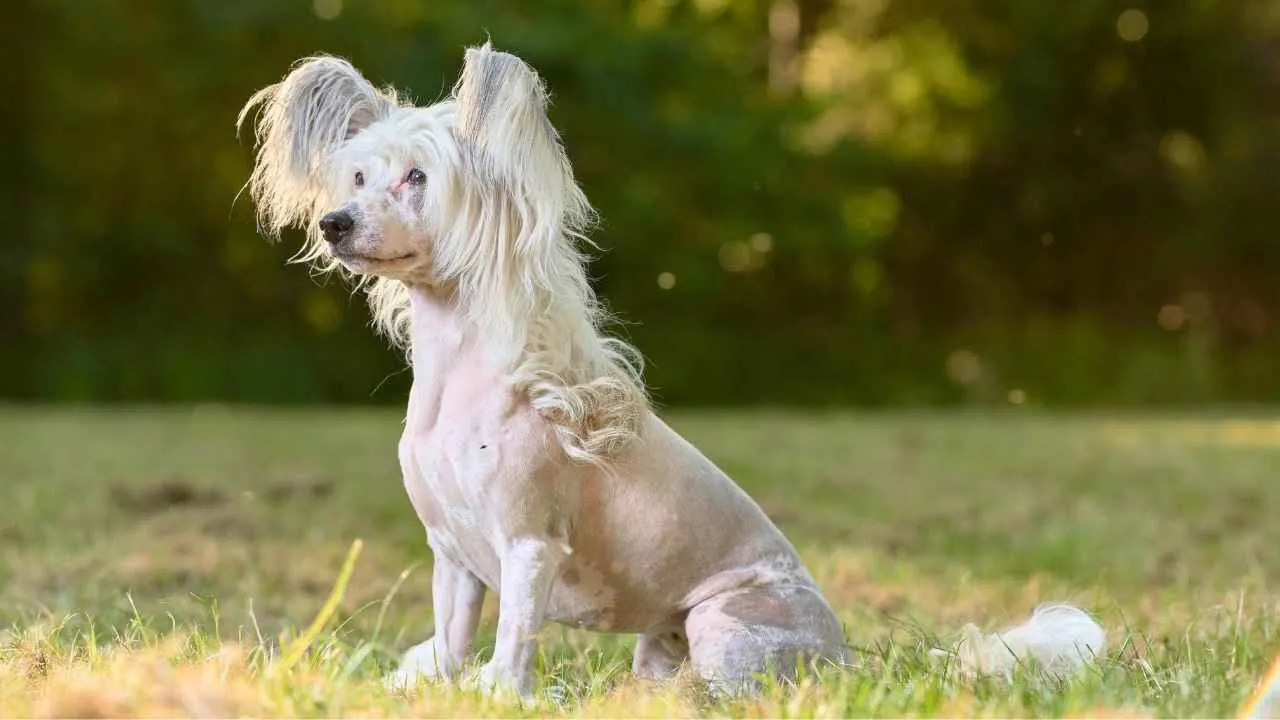
The Chinese Crested’s crest of flowing hair draws attention for how it rises and falls like a stylized lion’s fringe. When trimmed short around the body, that upright headpiece becomes even more pronounced. It’s not fluff for volume—it’s texture that adds expression and movement.
Elegance in Bone and Build
Their fine-boned structure isn’t fragile—it highlights deliberate design in form and gait. The elongated neck and tucked frame create a sighthound-like silhouette with unexpected poise. There’s a distinct balance between skin and coat that gives them a sharp visual contrast, especially in motion.
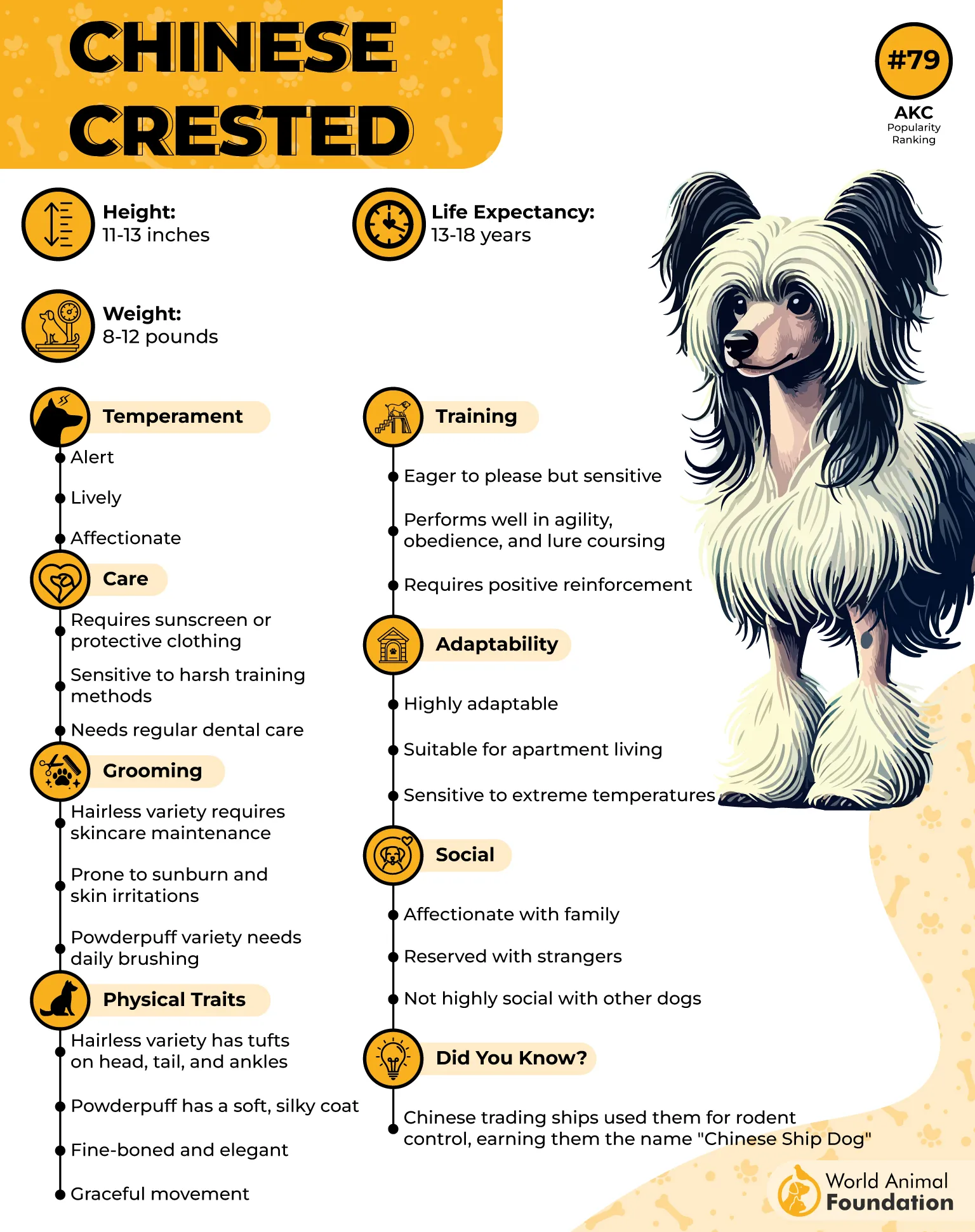
Expressive Thinking on Display
Chinese Cresteds stay mentally alert throughout the day, scanning their surroundings rather than reacting abruptly. They respond well to interactive play that demands mental stimulation rather than physical repetition. Their problem-solving moments often show in head tilts, extended eye contact, or stillness before action.
Atypical Canine Energy
They’re not pack-driven like many canines—they lean into selective social bonds and quiet companionship. That makes them incredibly intuitive with their chosen people, but less predictable in open social environments. It’s that subtle, personal connection that gives their presence depth beyond looks.
4. Löwchen
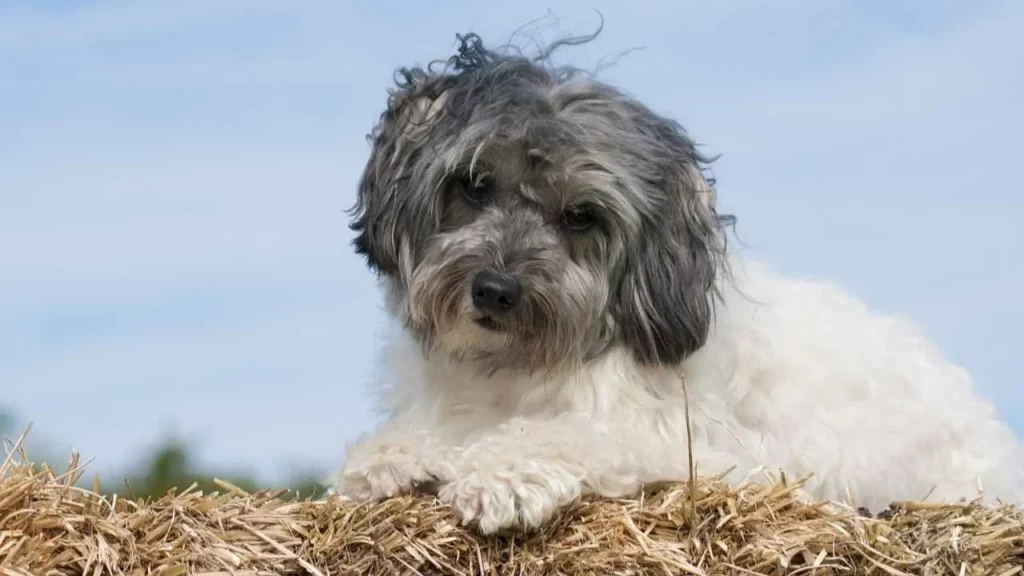
The Löwchen (aka little lion dog) is clipped to expose the back legs and accentuate the thick mane on its upper body. This distinct grooming style amplifies its resemblance to a lion on the move. The rounded tail plume completes the silhouette, giving it that unmistakable lion-like flair.
Confident in New Environments
They carry themselves with ease in unfamiliar spaces, scanning rather than startling. Even in noisy or unpredictable environments, their reactions remain level and steady. This awareness, combined with an alert gaze, gives them a self-assured presence not often seen in small breeds.
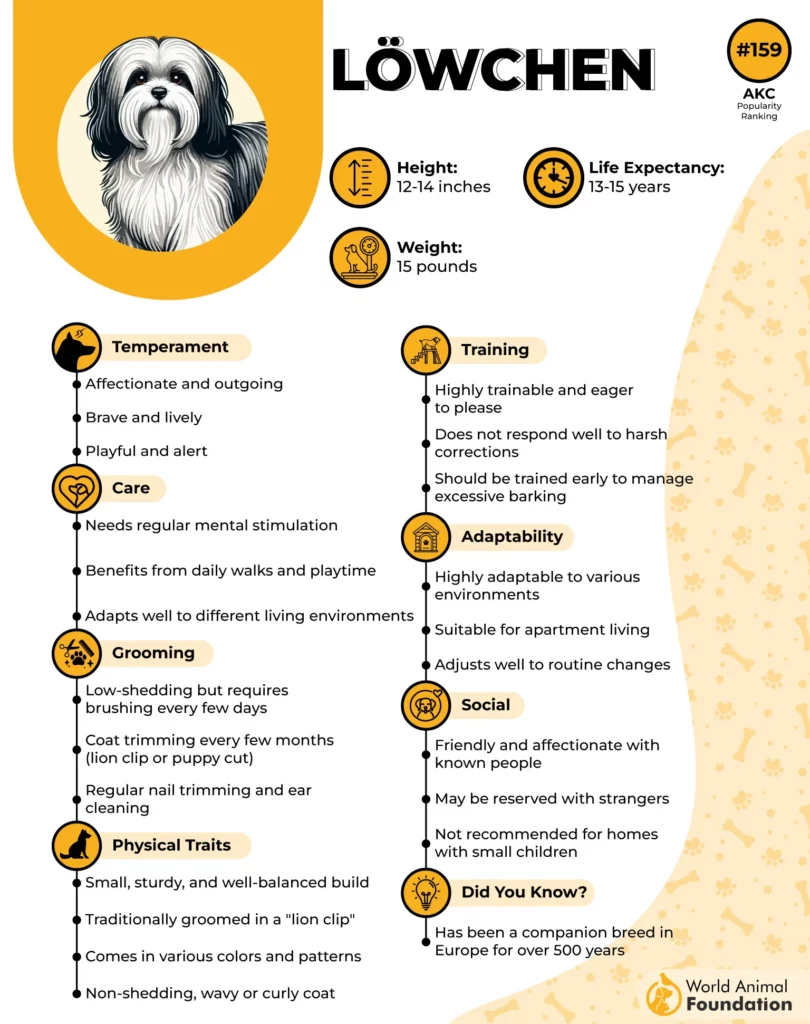
Emotionally Forward with Familiar Faces
The Löwchen isn’t content with being near; instead, it prefers to be involved. It will lean into laps, press into arms, and shadow routines with quiet determination. For their owners, this makes them feel more like emotionally present participants than passive pets.
Lion Name, Lion Nerve
Referred to as the little lion, the nickname comes through in both appearance and behavior. They’ll walk into rooms with dogs twice their size without hesitation, often holding their gaze longer than expected. It’s not loud bravado—it’s calm, consistent confidence that fills the space.
5. Leonberger
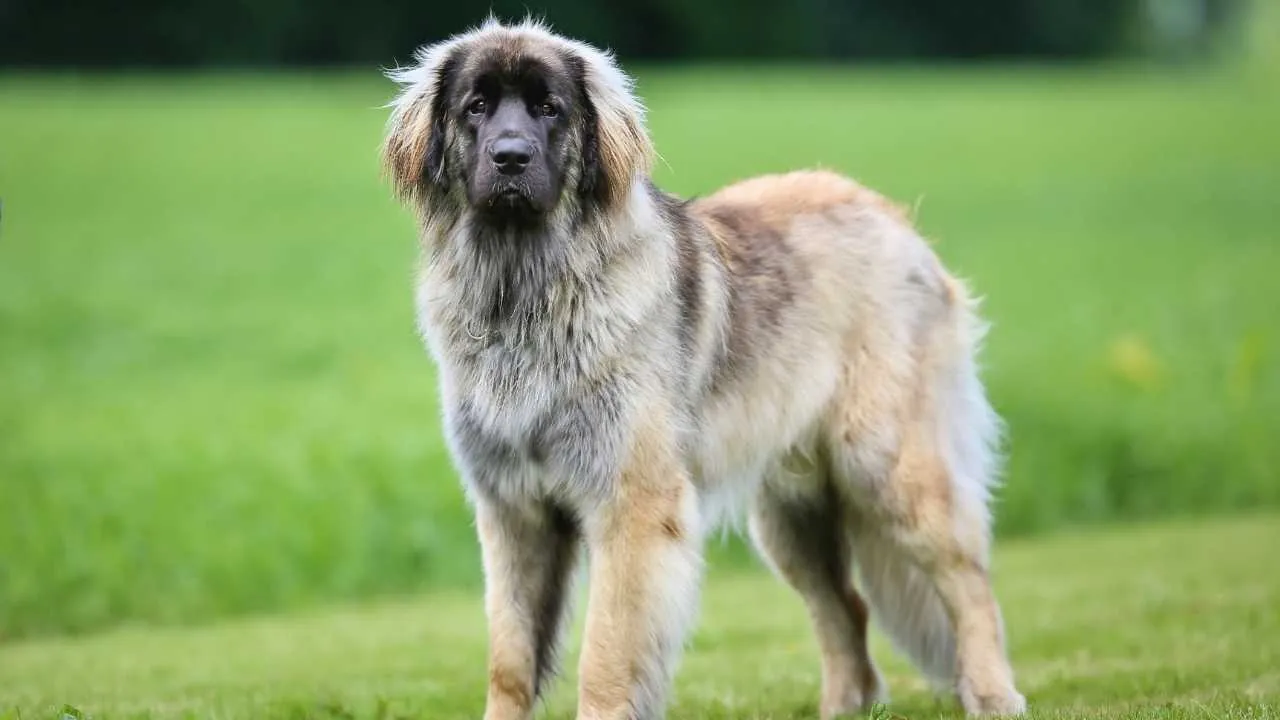
The Leonberger’s double coat forms a pronounced mane around the neck, especially prominent in males. Combined with its sheer size, often over 150 pounds, the lion’s resemblance becomes unmistakable in silhouette and movement. Their chest is broad, their stride fluid, and their entire frame built for presence.
Calm Presence in High-Activity Settings
They remain composed in noisy or active environments, often lying still while remaining mentally present. It’s this stable energy that makes them ideal around horses, crowds, or livestock. Their reactions are measured, not delayed—this gives handlers predictable control over their behavior.
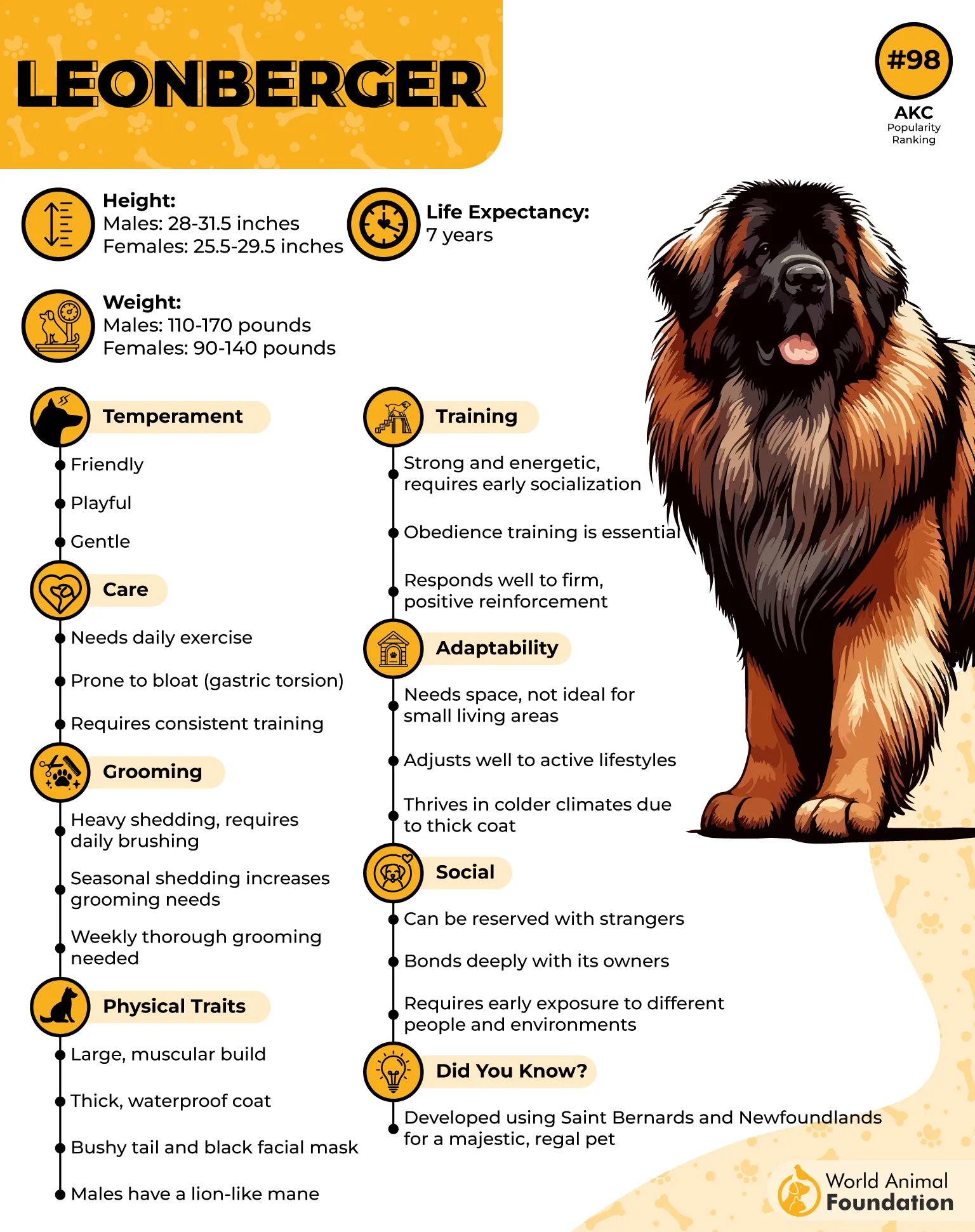
Historically Developed for Strength and Poise
The Leonberger dog was created by crossing Saint Bernards, Newfoundlands, and Great Pyrenees to match the appearance of a lion on a town crest, as PetMD claims. This was needed to work draft carts, pull weight, and protect without hesitation. That selective breeding embedded both strength and balance in its structure.
Devotion Without Dependency
They form deep bonds without becoming emotionally needy, especially within a family setting. Whether outdoors or inside, they stay close but not clingy, often resting nearby with eyes half-open, still tracking movement. This quiet awareness makes them both majestic and grounded in behavior.
6. Newfoundland
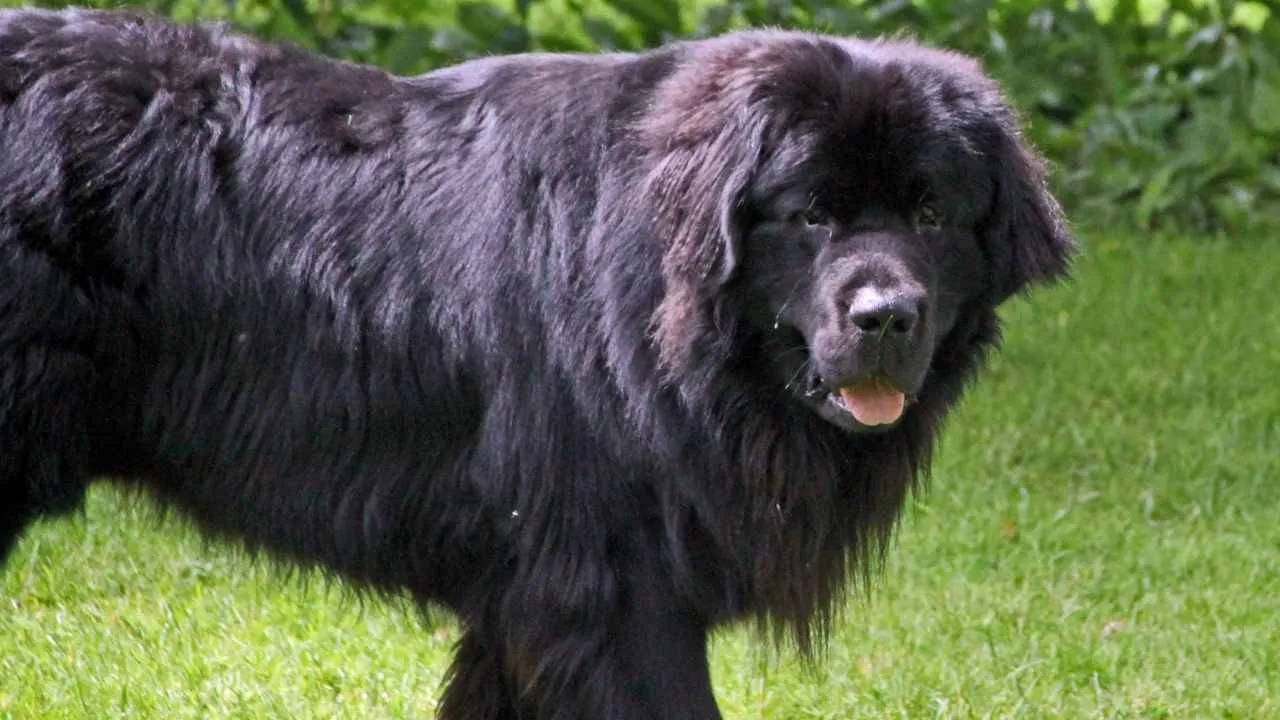
The Newfoundland’s frame is defined by sheer mass—thick-boned legs, broad shoulders, and a deep chest that gives a lion-like stance when still. Their movement is heavy yet fluid, especially noticeable when walking through snow or waterlogged terrain. The double coat further exaggerates the size, especially around the neck.
Calm Disposition in High-Energy Settings
They’re unusually composed around chaotic environments—whether it’s children running, livestock shifting, or tools clanging nearby. Their ability to remain still when others are moving contributes to their lion-like calm. This is part of what helps them stay happy even in busy, unpredictable surroundings.
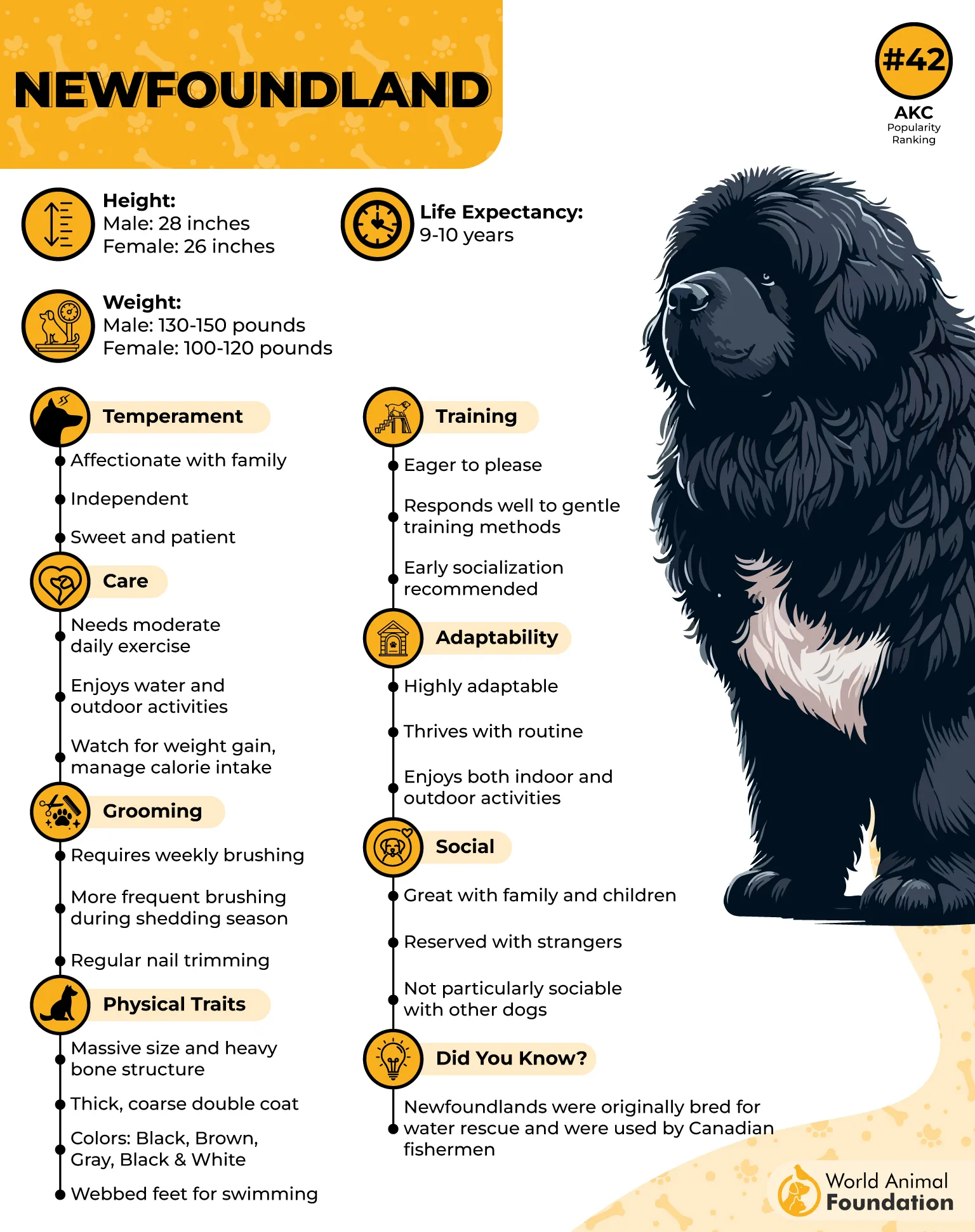
Historical Role in Water Rescue
Their lineage is shaped by working alongside fishermen in the North Atlantic, pulling nets and saving lives in freezing waters. That heritage gives them a deep instinct to observe, intervene, and carry weight, not just physically but situationally. The strength comes from function, not just form.
Steady Temperament From Early Age
Newfoundland puppies already show signs of restraint, often sitting back before approaching unfamiliar situations. Their preference for assessing before reacting isn’t trained, it’s wired in early. This makes them easier to raise around unpredictable elements like livestock or young kids.
7. Pomeranian

The double-layered fur of the Pomeranian creates volume that’s strikingly disproportionate to its small frame. Its neck area naturally puffs outward, enhancing the visual of a mane, especially when properly groomed. This dramatic flare draws immediate visual parallels to lion cubs.
Styling That Emphasizes the Resemblance
Among toy breeds, Pomeranians are most commonly given the lion cut, where the torso is trimmed short while the head, neck, and chest are left full. The result exaggerates their regal posture and proud head carriage. This isn’t just for aesthetics—it also helps manage heat in warmer regions.
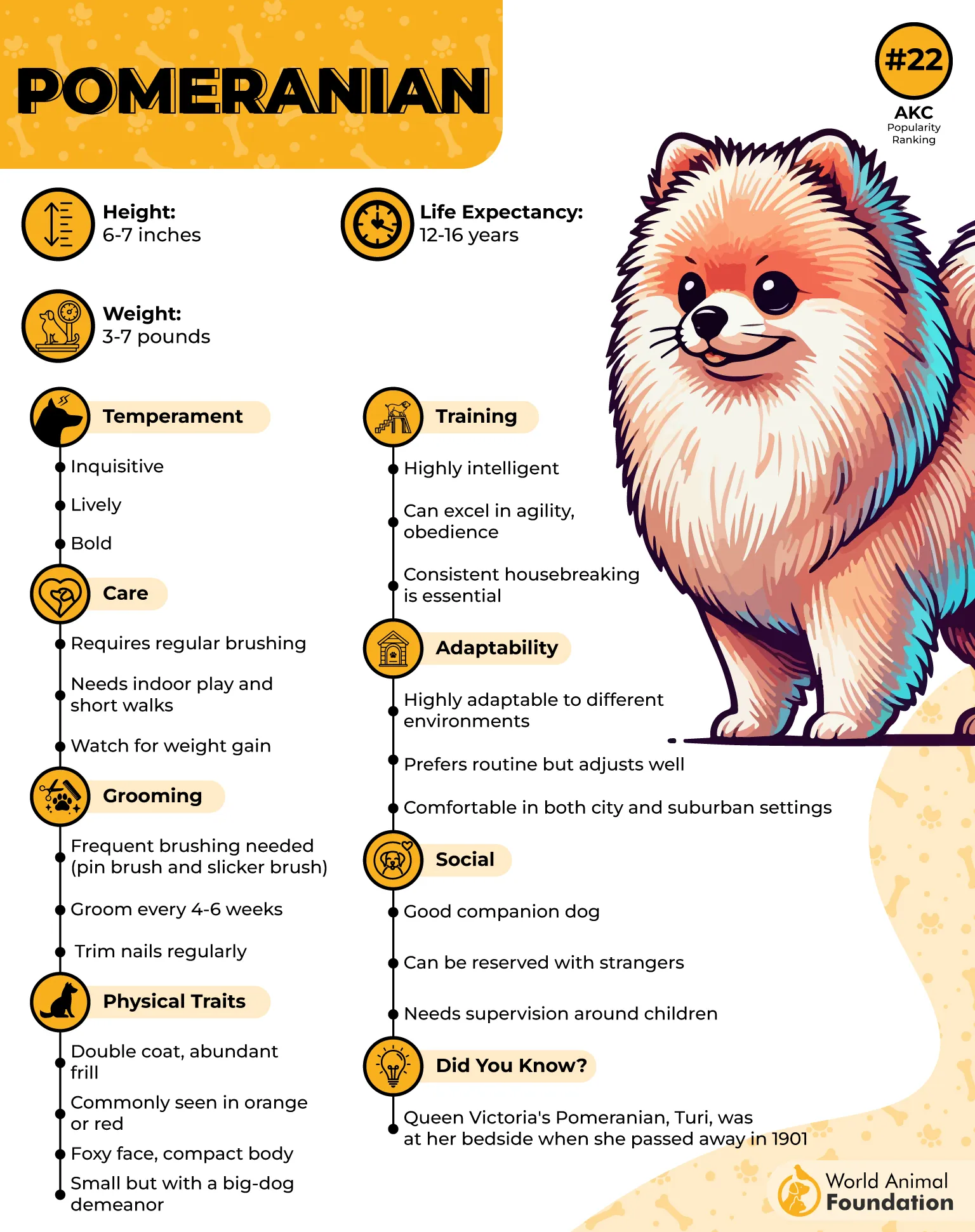
Alertness Without Hesitation
Their constant scanning of the environment and piercing bark make them efficient at raising alarms. They may weigh under 10 pounds, but their reaction time is immediate when unfamiliar footsteps are near. Their territorial boldness often catches people off guard due to their appearance.
Closely Bonded but Self-Assured
Though often carried or pampered, these dogs remain sharp-willed and capable of making independent decisions. Selective about their companions, they tend to form intense attachments with one or two people. That loyalty fuels their instinct to stand in front rather than behind when sensing an energy shift.
Conclusion
You’ve now met the dogs that stop people in their tracks. Whether it’s the thick mane, the deliberate stare, or that steady, unshaken energy, they carry something that feels older than domestication.
These aren’t dogs you forget. Some are gentle giants. Some are built for silence and strategy. Others are firecrackers wrapped in fluff. But every one of them carries echoes of the big cat they resemble.
And here’s the thing—brushing isn’t optional. Neither is space. Or exercise. These breeds may look royal, but they don’t live like lazy kings. They’ve got instincts, drive, and, in some cases, just enough stubborn streak to keep you on your toes.
A lion dog doesn’t try to be impressive. It just is. And now that you’ve seen them, you’ll spot that presence anywhere in the world. Quiet. Proud. Impossible to ignore.


